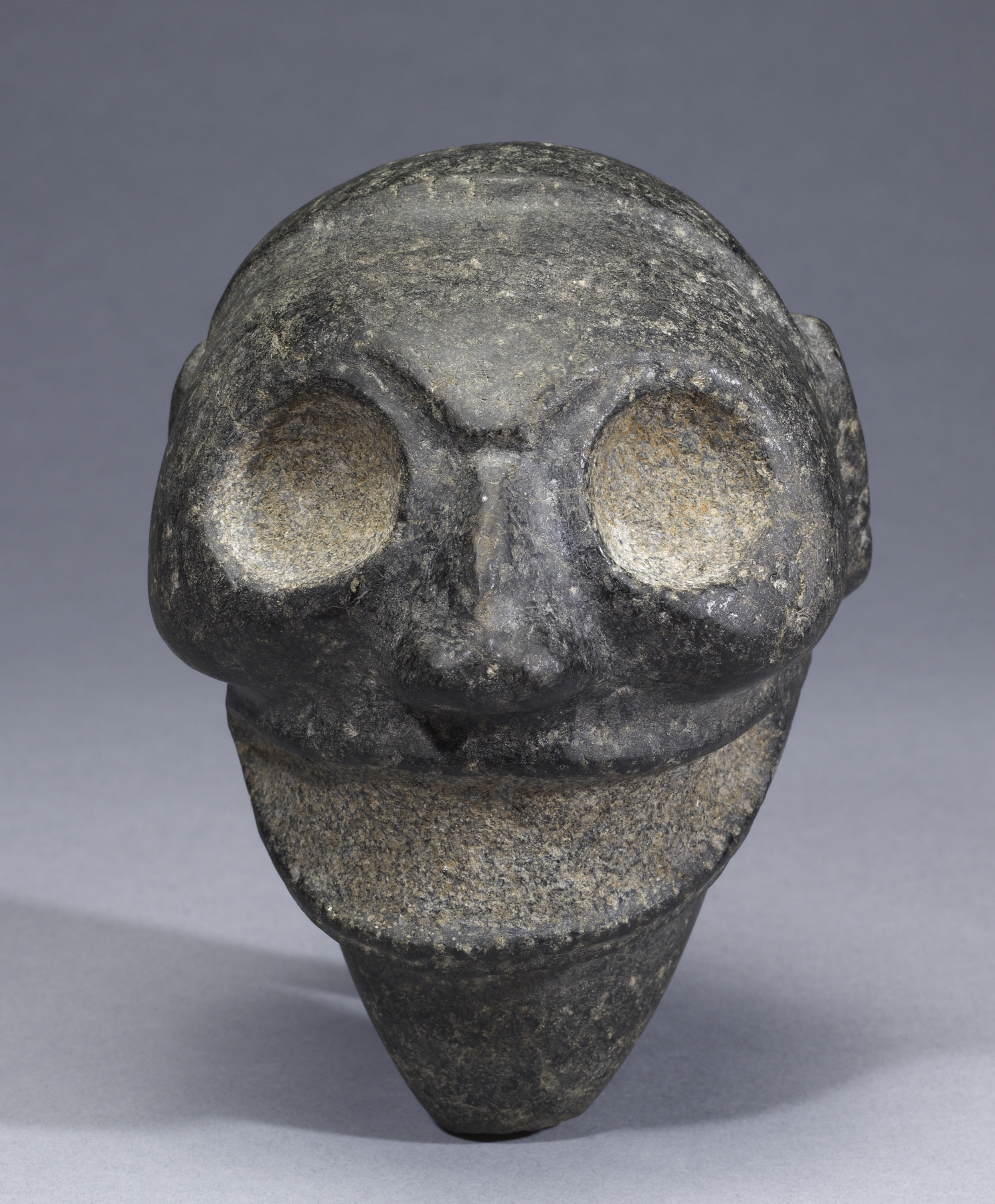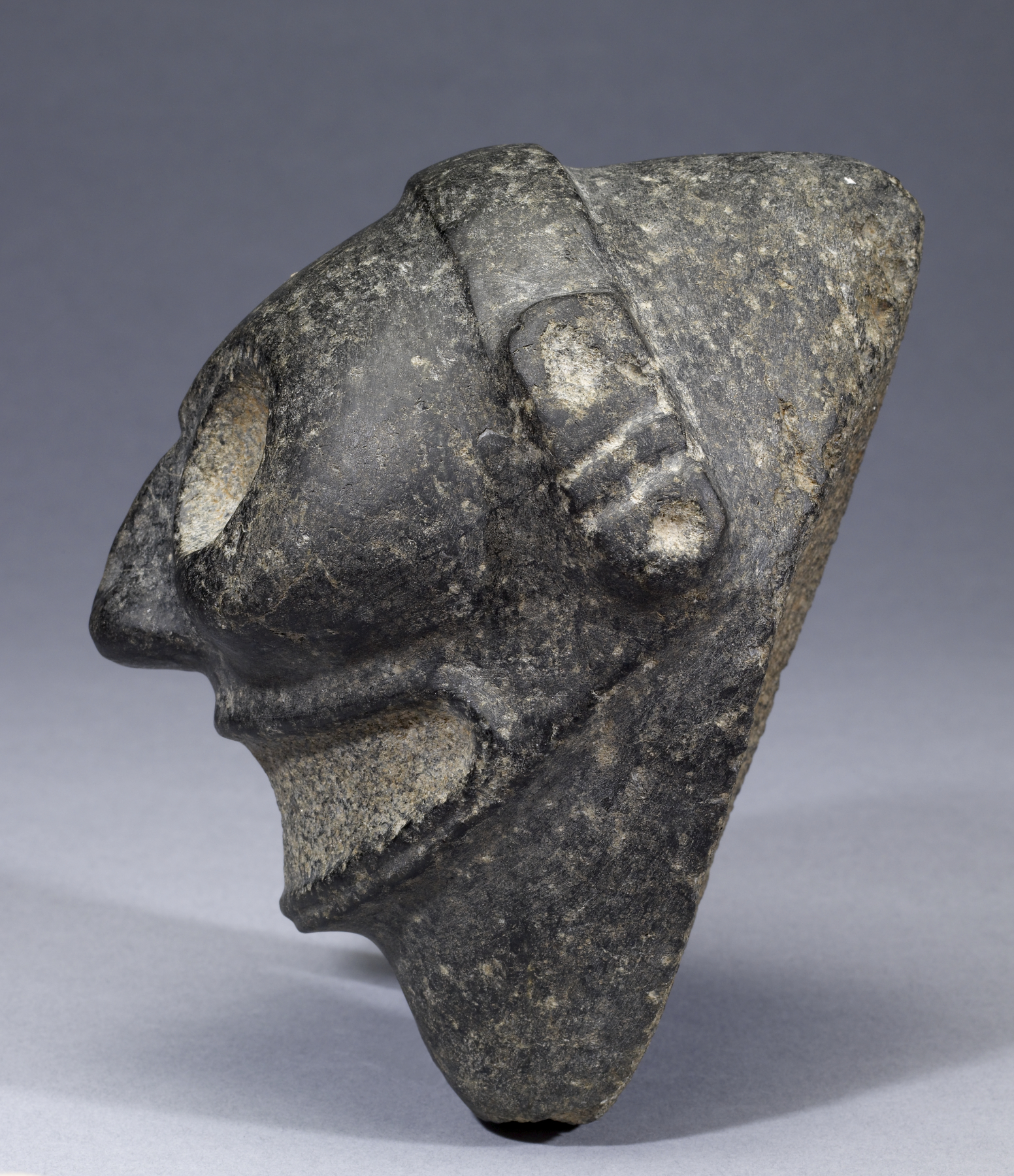"Zemi" (Deity Figure)
(Ancient Americas )
In the ancient Caribbean, the heads of ancestors were objects of devotion, kept in special baskets in the round temples known as bohíos. The head, rather than other bones was kept because the Taíno peoples of the Caribbean believed that spiritual power in the body resided in the head, particularly the face, through which people could communicate their emotions and spirit. However, although durable, these carefully kept skulls disintegrated over centuries of veneration, so later Taínos (ca. 1000-1500 CE) made stone representations of skeletal heads that seem to have fulfilled the same purpose as the keeping of skulls. These are often known as “Macorix heads,” as many of them have been found near San Pedro de Macorís, in the Dominican Republic. However, they are also part of a broader group of objects known as zemis or cemis, which refer to ancestral spirits and the earthly containers for those spirits. Because this head was the container for the presence of a known ancient and powerful ancestor, it was not necessary for the sculpture to be portraitlike. Most are quite generalized, but show status in part through a headband or diadem that wraps across the high foreheads of these figures, ending at their ears.
Provenance
Provenance (from the French provenir, 'to come from/forth') is the chronology of the ownership, custody, or location of a historical object.
Estate of Alex Gordon, New York City; Pre-Columbian and Tribal Art Auction 29, Howard S. Rose Gallery, New York City, December 8 2004, lot 155 [1]; purchased by Mr. John A. Stokes, Jr., December 8 2004; given to Walters Art Museum, 2005, [2].
[1] ID 1365-64
[2] via the Austen-Stokes Ancient Americas Foundation
Exhibitions
| 2018 | Crowning Glory: Art of the Americas. The Walters Art Museum, Baltimore. |
Geographies
Dominican Republic (Place of Origin)
Measurements
H: 4 3/4 x W: 6 1/2 in. (12.1 x 16.5 cm)
Credit Line
Gift of the Austen-Stokes Ancient Americas Foundation, 2005
Location in Museum
Not on view
Accession Number
In libraries, galleries, museums, and archives, an accession number is a unique identifier assigned to each object in the collection.
In libraries, galleries, museums, and archives, an accession number is a unique identifier assigned to each object in the collection.
2005.6




